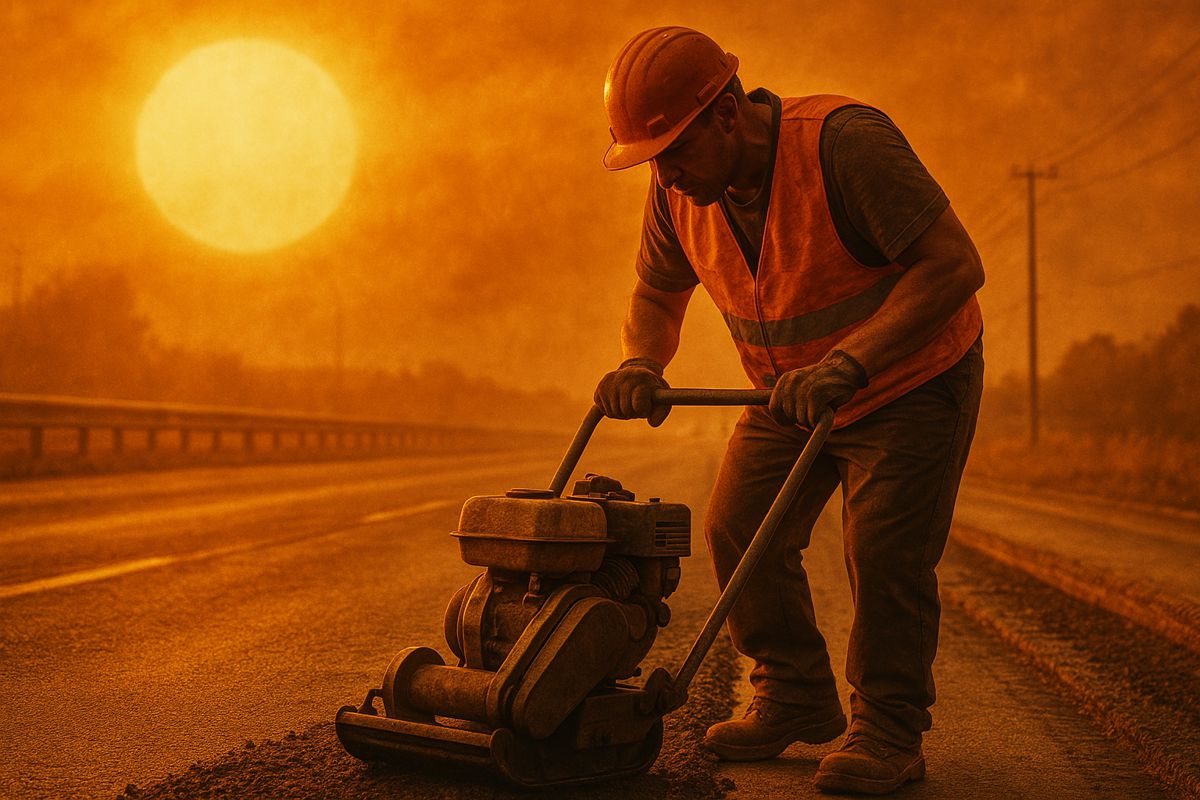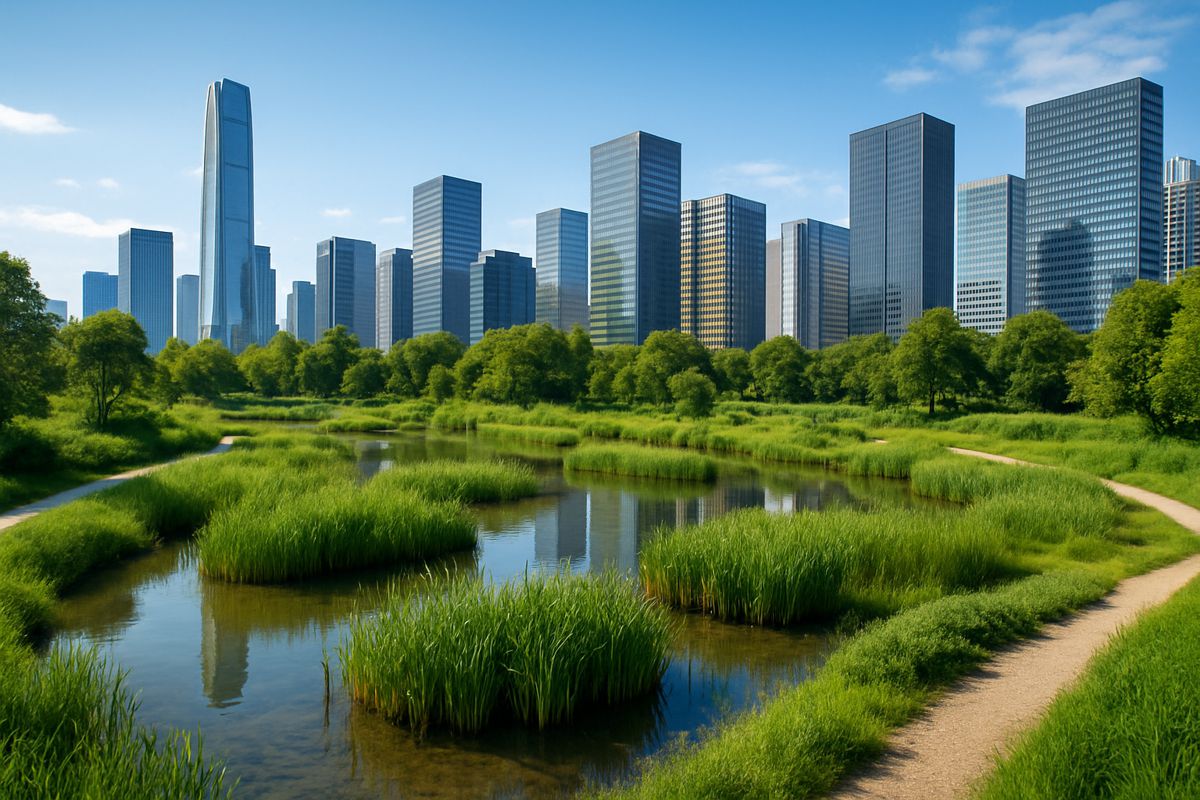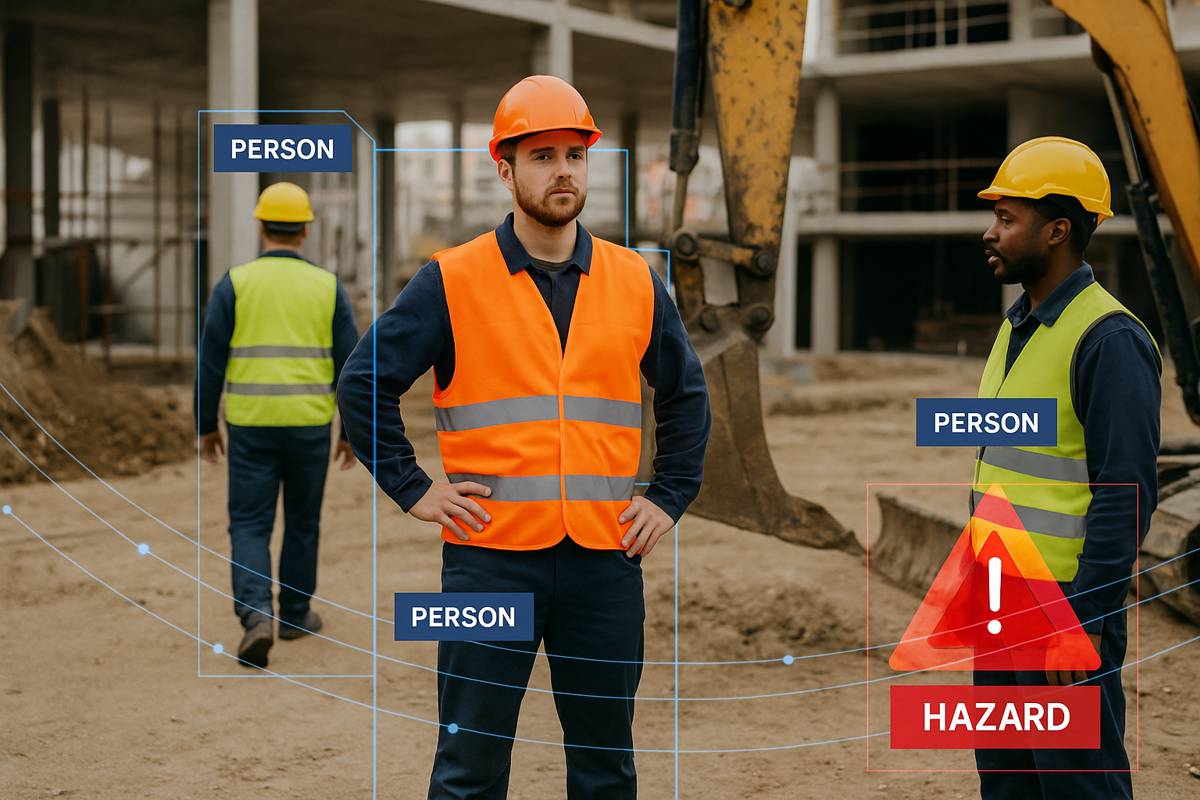What Rising Heatwaves Mean for Outdoor Workers
Heatwaves are becoming one of the most urgent climate-related threats facing outdoor workers today.
According to the EPA, the United States is projected to continue warming faster than many other regions of the world. Since 1970, average temperatures across the country have increased by about 60% more than the global average. This trend is expected to intensify as climate change accelerates.
Northern and western regions are predicted to warm even more rapidly, with multiday heatwaves becoming longer, more widespread, and more severe. In recent decades, heatwaves have also become hotter, more frequent, and longer-lasting.
This article explains how rising heatwaves affect outdoor workers and the health and safety risks they face. It also outlines strategies employers and policymakers can use to protect vulnerable labour groups.
The Physiological Toll of Extreme Heat
Outdoor workers face serious physiological stress as rising temperatures challenge the body’s natural cooling. According to the U.S. Bureau of Labor Statistics (BLS), 33 percent of workers in 2023 were regularly exposed to outdoor conditions. This share is much higher in fields such as construction, firefighting, and landscaping, where 99.5 percent of workers are regularly outdoors.
Heat exhaustion can develop quickly, with symptoms including heavy sweating, dizziness, rapid heartbeat, and nausea. More severe is heat stroke, a medical emergency that occurs when body temperature exceeds 104°F, risking organ damage or death. Physically demanding work increases danger, as exertion generates additional heat, and dehydration further impairs cognitive function and coordination.
Acclimatization typically takes one to two weeks, leaving new workers or those returning after a break particularly vulnerable. Effective protection includes hydration, rest breaks, shaded areas, and scheduling tasks to avoid peak heat periods.

Accidents Linked to Heat Stress
For workers in physically demanding fields, such as construction, elevated temperatures create a significantly more hazardous environment. Heat stress directly impairs judgment, slows reaction times, and reduces concentration, faculties critical for operating heavy machinery or working at heights. Sweaty palms also compromise grip strength, increasing the risk of falls and tool-related injuries.
Studies demonstrate that accident rates on construction sites rise substantially when temperatures exceed 90°F. Fatigue sets in earlier, leading workers to take shortcuts in safety protocols, compounding the danger.
This convergence of physical exhaustion and cognitive impairment threatens both individual safety and project timelines. If a heat-related accident occurs, seeking a construction accident lawyer consultation is essential to ensure the worker is protected.
According to Loewy Law Firm, a lawyer can assess the situation and develop an effective strategy for seeking compensation. They may pursue a claim through workers’ compensation or file a lawsuit, providing protection against the combined dangers of heat stress and workplace hazards.
Economic Consequences Across Industries
The economic ripple effects of heat-related work disruptions are substantial, extending throughout global supply chains.
According to the National Institutes of Health (NIH), consistent evidence shows the significant socioeconomic impacts of heat exposure in the workplace. Actual productivity losses globally are already nearly 10%, with the most affected sectors being agriculture and construction. These losses are expected to dramatically increase up to 30–40% under the worst climate change scenario by the end of the century.
Agricultural productivity declines sharply due to harvest delays and crop losses. Construction projects face costly slowdowns as mandatory cooling breaks and reduced work hours extend completion timelines.
Industries also bear the cost of increased workers’ compensation claims, higher insurance premiums, and substantial medical costs for heat-related illnesses. Labour shortages intensify as workers seek safer indoor alternatives, driving up wages and creating staffing challenges.

Inadequate Regulatory Protections
Despite mounting evidence of heat-related risks, regulatory frameworks for protecting outdoor workers remain surprisingly underdeveloped.
The United States federal government, for instance, lacks specific heat exposure standards under OSHA regulations, leaving millions of workers vulnerable. As the NRDC notes, experts have been recommending common-sense criteria for such a standard for most of OSHA’s 50-year history, yet adequate federal protection is still missing.
While some states, such as Maryland and Oregon, have implemented mandatory water breaks, shade, and acclimatization programs, enforcement remains challenging. The absence of standardized heat stress metrics further complicates compliance monitoring.
Advocates, including unions and health professionals, have successfully pushed for new heat protections in several states since 2020. However, the regulatory gap persists, leaving workers exposed to preventable heat-related injuries as average temperatures increase and every summer becomes more dangerous.
Adaptation Strategies and Workplace Innovations
Forward-thinking employers are adopting comprehensive strategies to protect outdoor workers from heat while maintaining productivity. Key measures include:
- Scheduling adjustments: Shift physically demanding tasks to cooler morning or evening hours to reduce midday heat exposure.
- Engineered cooling solutions: Install misting stations, air-conditioned rest areas, and provide cooling vests to help lower core body temperature.
- Hydration protocols: Ensure easy access to water and electrolyte beverages throughout the worksite.
- Heat safety training: Educate workers and supervisors to recognize early warning signs of heat-related illnesses.
- Technology monitoring: Use wearable sensors to track workers’ vital signs and trigger alerts when dangerous thresholds are approached.
- Buddy systems: Pair workers to monitor each other for symptoms of heat stress.
- Acclimatization programs: Gradually increase heat exposure for new or returning workers during the initial weeks.
These multi-layered approaches demonstrate that worker safety and operational efficiency can go hand in hand.

The Climate Justice Dimension
Heat vulnerability greatly intensifies existing social and economic inequalities among outdoor workers. Low-income employees often lack the leverage to demand protective measures. Migrant and undocumented workers may also hesitate to report unsafe conditions or seek medical attention due to immigration-related fears.
This vulnerability also has a pronounced racial dimension. According to KFF, data from 2018–2021 indicate that American Indian/Alaska Native (AIAN) individuals were the most likely to die from heat. During the same period, Black individuals experienced higher heat-related death rates than White individuals.
Noncitizens similarly face greater risks of heat-related mortality compared with citizens. Communities of colour are disproportionately represented in outdoor jobs with high heat exposure. Mitigating these disparities requires protective measures that are culturally sensitive, multilingual, and accessible, ensuring the safety of those most at risk in the workforce.
Frequently Asked Questions
What temperature is considered too hot for outdoor work?
While specific thresholds vary by task intensity and individual factors, many experts recommend enhanced precautions when temperatures exceed 90°F. The heat index (combining temperature and humidity) provides better risk assessment. Above 103°F heat index, conditions become dangerous for most outdoor work without substantial protective measures and frequent breaks.
Are employers legally required to provide heat protection?
Requirements vary significantly by location. Some states mandate specific heat illness prevention programs, including water, shade, and breaks, while others lack explicit heat regulations. Federal OSHA standards require general hazard protection but lack heat-specific rules. Workers should verify local regulations and report unsafe conditions to the appropriate authorities or labour organizations.
How can outdoor workers protect themselves during heatwaves?
Self-protection strategies include drinking water regularly before feeling thirsty and wearing light-coloured, breathable clothing. Workers should take breaks in shaded or air-conditioned areas, recognize personal heat illness symptoms, and gradually acclimatize to heat exposure. Never ignore warning signs like dizziness or confusion.
Rising heatwaves pose serious health, safety, and economic risks for outdoor workers, especially in physically demanding industries. Effective adaptation strategies, regulatory improvements, and legal protections are essential to safeguard vulnerable populations. Prioritizing worker safety ensures both well-being and sustained productivity amid increasingly extreme temperatures.




















